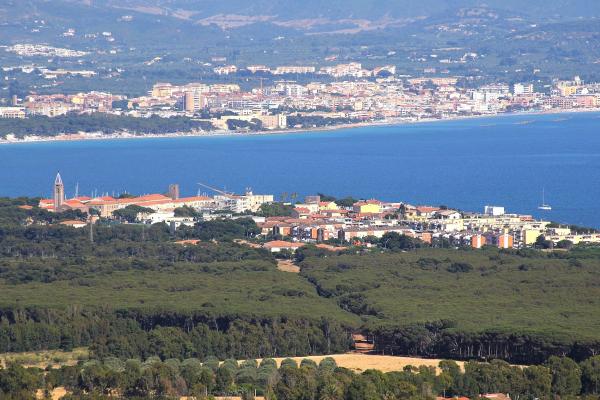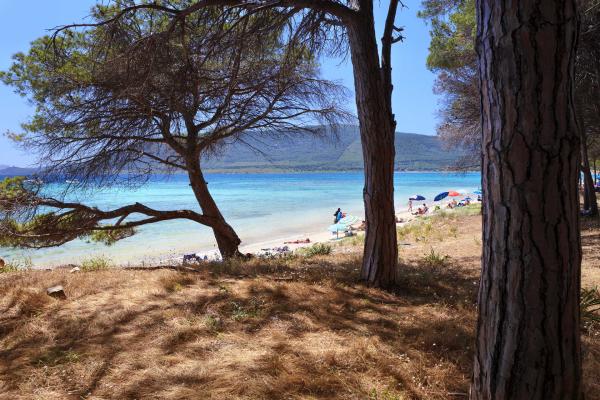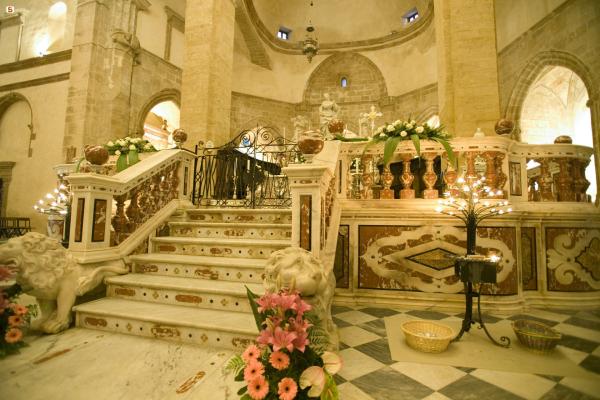The name brings to mind a past that has now vanished, evident in the nearby ruins, while today’s reality shows an arch of light sand, surrounded by sandstone rocks and myrtle and lentisk bushes, in front of a sea with multiple shades of blue. The beach of Lazzaretto is one of the main features of the Alghero coastline, nestled along the Coral Riviera, between the hamlet of Fertilia and the protected area of the Porto Conte Park.
The actual sandy shore of Lazzaretto is just over 300 metres long and is wider in the central area. On the eastern side, you will see rocky outcrops, while in the opposite direction the sand - generally of medium-fine grains - is mixed with a few pebbles. The sides of the beach are particularly suitable for those who want to alternate sunbathing with a little shade from the sun’s rays: the western side in particular is the first area to become shady in the afternoon.
The name brings to mind a past that has now vanished, evident in the nearby ruins, while today’s reality shows an arch of light sand, surrounded by sandstone rocks and myrtle and lentisk bushes, in front of a sea with multiple shades of blue. The beach of Lazzaretto is one of the main features of the Alghero coastline, nestled along the Coral Riviera, between the hamlet of Fertilia and the protected area of the Porto Conte Park.
The actual sandy shore of Lazzaretto is just over 300 metres long and is wider in the central area. On the eastern side, you will see rocky outcrops, while in the opposite direction the sand - generally of medium-fine grains - is mixed with a few pebbles. The sides of the beach are particularly suitable for those who want to alternate sunbathing with a little shade from the sun’s rays: the western side in particular is the first area to become shady in the afternoon.
You will find various services at your disposal: parking and a stopping area for campers, refreshment areas and beach umbrella and boat rentals. Furthermore, the beach is accessible to the disabled and can also be reached by bike, using the cycle path that runs parallel to the SS 127 bis state road for most of the route. On the sides of the main beach there are numerous small beaches, known as the ‘little coves of Lazzaretto’: you can reach them along the half-hidden paths in the Mediterranean scrub and they are ideal for those who prefer a more intimate, wilder environment. During your walk, you will also notice some typical Mediterranean dwarf palms among the bushes.
Moving south, you will pass the ruins of the building that accommodated the crews of Provençal ships, forced to quarantine due to the plague during the 18th century. Further ahead, on the opposite side of the promontory, where the sixteenth-century tower of the Lazzaretto stands tall – also known as the tower of Capo Galera – you will find a beach with golden sand and shallow waters with a few rocks, perfect for snorkelling. A stretch of coast dotted with little coves and rocks separates the beach of Lazzaretto from the Bombarde. Another arch-shaped beach, which is longer (one kilometre), will fascinate you with the ochre reflections of the sand, the iridescent colours of the sea and the reddish hues of the rocks along its sides. From the wonders of nature to those of archaeology the distance is short, less than three kilometres: this is the distance between the Lazzaretto and the nuraghe Palmavera, a complex building, consisting of a keep, two towers and a rampart, surrounded by a large village, where the ‘meeting hut’ stands out.













